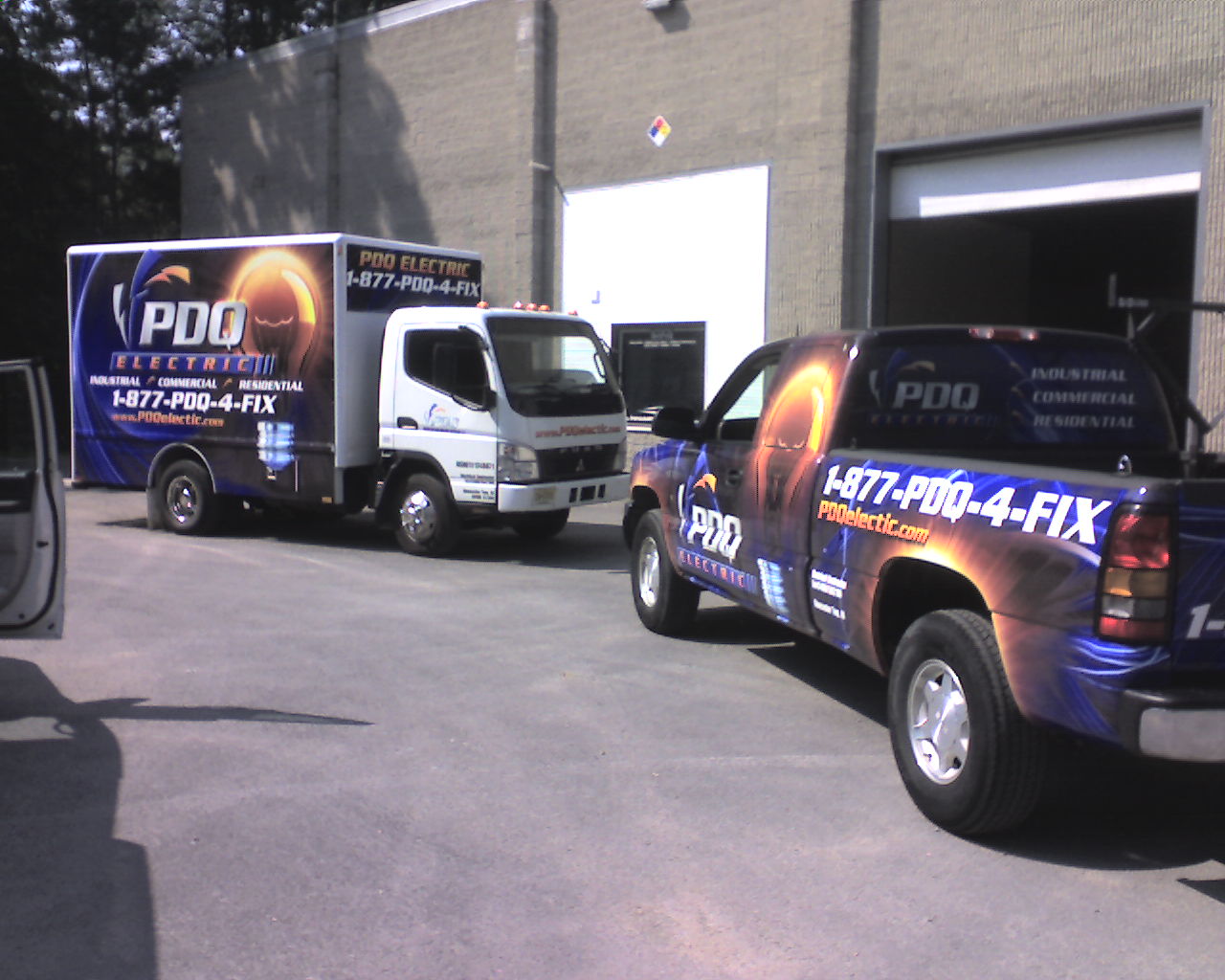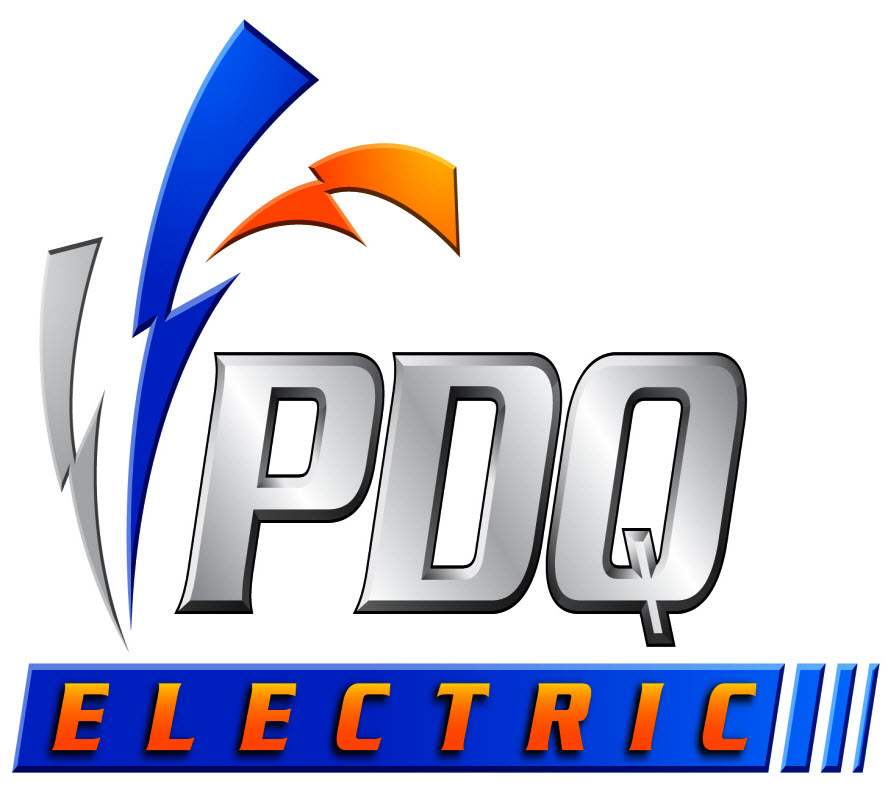PDQIE - PDQ Industrial Electric
Programmable Logic Controller (PLC), Distributed Control System (DCS)
Human Machine Interface (HMI), Supervisory Control And Data Acquisition
(SCADA)
Skid Mounted Equipment Integration Control
PLC, DCS, HMI, SCADA
Differences?
PLC: programmable Logic controller. the brain that conrol the
function of machine parts, it was made to replace relays, timers and counter etc.
DCS: Distributed Control System similar to PLC -
Historically, if you go back 20 years, DCS systems were BIG systems built by big companies like Foxboro, Honeywell
and Bailey. They were used to control big plants like oil refineries and often used analogue I/O and PID control as
well as "relay replacement" logic. At that time PLC's were aimed primarily at relay replacement. They tended to be
small systems performing smaller tasks such as controlling a single machine.
Now times have changed. PLC's have advanced and are capable of analogue control and all the functionality of DCS
systems. Furthermore, PLC's are mass produced in large quantities and have been designed to be cost competitive.
DCS systems have advanced also but the result is that they now both cover the same territory.
HMI: Human Machine Interface. similar to Scada, it is an LCD
display usually rectangular in shape and it has function buttons on it that are connected to internal PLC bit to
triger outputs. difference between HMI and Scada is that Scada is PC based monitoring system whereas HMI is
eletronic and does not take alot of time to restart like PCs
SCADA: Super-visory Control And Data Acquisition. it is the
software design that allow you to read values from PLCs through a PC monitor, it also allow you to write register
values and read register value then programmatically visualize them graphically. etc. many engineers consider
machines with Scada interface: CNC machines.
Actual Application
PLCs are more or less machine oriented... When it comes to the case of controlling a machine... PLCs are the
best...
DCSs are mainly process oriented... for eg: if you want to control a Chemical plant... where there are lots of
operations taking place, there are lots of inter-related control loops, and most importantly, places where falults
can lead to catastrophic results, DCSs are used for total plant control, and the PLCs can be used as a part of the
DCS.
When it comes to the difference between DCSs and SCADAs.... DCSs concentrates more on the control of the
process, but SCADA concentrates more on data gathering....
Skid Mounted Equipment Integration Control
By PLCopen North America
The use of skid mounted equipment has become popular for a number of reasons but they pose some unique automation
and control challenges that can be solved by using IEC 61131-3 and PLCopen standards.
Skid mounted systems are factory built modules designed to provide a specific function needed in a plant. The name,
skid, refers to the fact that the equipment is built up on a metal platform so the entire unit may be delivered to
a manufacturing or process location and set in place as a unit. Building a skid in a factory rather than onsite
provides a number of advantages. The specialty supplier has more and better tools and materials right at hand, and
the work is performed by multi-discipline crews who work together on every project. The result is work can be
performed far more efficiently with higher quality and shorter project schedules. These systems are generally built
to the user’s standards and specifications. The unit is built on a platform and frame designed to be shipped and
delivered to the location in a plant where it is required. Examples of skid mounted equipment including lift
stations, heat exchangers, power generators, cogeneration units, filter systems, pumping systems, DI Water,
assembly machines, packaging machines, chemical processing, boilers, and other process equipment. Physical,
electrical, and automation network connections are made to the unit for integration with the production plant.
Control Dilemma
The controls and automation on a skid become part of the plant just as much as site installed controls and
automation. Ideally the manufacturing company needs to be able to efficiently maintain, troubleshoot, and do
continuous improvement on the control and automation embedded in the skid. This cost should be factored into the
lifecycle cost analysis of purchasing skids to expose the real cost tradeoffs.
The skid supplier delivers the functional unit with controls and automation onboard and this is where there needs
to be standardization. The dilemma is that the skid vendor has typically standardized on one brand and model of
controller and the plant is using another vendor. In the case of a process plant, they are likely to have a DCS and
the skid systems are delivered with PLC controls further complicating the situation. The plant people must spend
the time to learn a new control and its interfaces.
The skid vendor wants to use the controls they have standardized upon. The alternative is for the customer to
demand a specific brand and model control be supplied which generally results in a large increase in price from the
skid vendor. The skid vendor must spend the time to learn a new control and implement the control in this
platform.
Standardization without Suffocation
PLCopen certifications and standards offer a way to solve this dilemma by requiring that the controllers and
software used meet IEC 61131-3 and PLCopen standards. This is analogous to specifying that the supplier delivers
units with an industry standards network protocol (examples: DeviceNet, Profibus, Modbus).
The first requirement is that the controllers specified are certified to the PLCopen Conformity and Reusability
levels to provide uniformity of functions used to perform the control.
By requiring controllers that meet PLCopen standards, users insure a common software and applications platform
including functions, data typing, data syntax, and language constructs. The standard includes the definition of the
Sequential Function Chart (SFC) language used to structure the internal organization of a program, and four
inter-operable programming languages: Instruction List (IL), Ladder Diagram (LD), Function Block Diagram (FBD) and
Structured Text (ST).
Skid System Function Standardization
The PLCopen standard includes the capability to build user created objects to encapsulate functions. The buyer
of the skid module can insure functional requirements and uniformity are met by specifying functions to be provided
by the suppliers. Simply define the inputs, outputs, and behavior of major control elements that the supplier must
provide. This insures that plant people can easily troubleshoot the controller and process when problems occur.
Depending on the functions required in the skid system, the skid vendor should be required to supply controllers
that are certified to other PLCopen standards.
Motion Control
Based on application requirements and project specifications, engineers are required to use or select a
wide range of motion control hardware. In the past this required unique software to be created for each application
even though the functions are the same. The PLCopen motion standard provides a way to have standard application
libraries that are reusable for multiple hardware platforms.
This lowers development, maintenance, and support costs while eliminating confusion. In addition, engineering
becomes easier, training costs decrease, and the software is reusable across platforms. Effectively, this
standardization is done by defining libraries of reusable components. In this way the programming is less hardware
dependent, the reusability of the application software increased, the cost involved in training and support
reduced, and the application becomes scalable across different control solutions. Due to the data hiding and
encapsulation, it is usable on different architectures, ranging from centralized to distributed or integrated to
networked control. It is not specifically designed for one application, but will serve as a basic layer for ongoing
definitions in different areas. As such it is open to existing and future technologies.
Fluid Power
The new PLCopen Fluid Power initiative is part of the motion control working group to define standard functions
for the control of fluid power devices. This enables logical integration of electrical and fluid power
functions.
Safety
Safety can now be implemented using a standard set of function blocks. This supports the integration of logic
and motion application development with safety. This combination helps developers integrate safety related
functionality into their systems, even from the beginning of the development cycle and contributes to reduction of
certification time and costs.
The combination of logic, motion, and safety in one environment provides the user with a harmonized
view of the total application within one environment. And with multiple implementations, this is also valid across
platforms. This means less educational efforts, and simpler transfer of knowledge and application software between
different controls. This standardizes safety integration reducing programming errors and avoids unnecessary cost
overruns on projects. This is accomplished by using tested modules for programming, including language definition
with subsets.
The PLCopen Technical Committee 5 (TC5) has published Safety Software User Guidelines, a reference for control
people implementing safety control systems. The document is available at no cost on the PLCopen Web site. This is a
companion publication to PLCopen Technical Committee 5 - Safety Software Technical Specification; also available on
the Web site. This document illustrates the ease of use of the defined function blocks in real life
applications.
The Safety Software User Guidelines document provides a wealth of information for control engineers on safety
applications including: Creating a Safety Plan, Terms and Definitions, Example of Safety Functions in a Production
Line, Description of the PLCopen Function Blocks, PLCopen Function Blocks and Connection to the Periphery,
Graphical Overview of Safety Application Examples, Use of Safe Drives, Diagnostics Conceal I/O Interface, and
Two-Hand Control. Included are examples of the combination of Logic, Motion, and Safety, making it easier and more
natural for the user to integrate safety in their motion and logic application. Safety functionalities like mode
selector, safely reduced speed, and several stop functionalities, have a direct link to the motion control
application. The published document provides examples and guidance for the combination of the different
technologies.
Certified Training
PLCopen defines requirements for certified trainers to insure uniformity in education for
users.
OPC UA
The OPC Foundation and PLCopen have combined their technologies to form one platform for
manufacturer-independent information and communication architecture. The mix of OPC Unified Architecture (UA) and
IEC 61131-3 is thus the future-safe basis for the realization of automation tasks. The objective is to increase the
reusability of controller and visualization modules and their communication and, as a result, considerably increase
efficiency in the engineering process.
The new OPC UA technology provides an efficient and secure infrastructure for communications - from sensor to
business enterprise computing for all automation systems in manufacturing and process control. OPC UA leverages web
services to provide a single programming paradigm in a scalable architecture that can be implemented in a range of
devices - from embedded to enterprise.
The implementation of this IEC61131-3 software model on an OPC UA server address space is defined in the common
specification adopted by both organizations. Corresponding OPC UA object types are created from declarations of
function blocks in the PLC and corresponding OPC UA objects from instances of the function blocks. This results in
the advantage that a control program, regardless of the controller on which it is executed, and the OPC UA server,
via which the data is accessed, is always implemented in the same structure of objects in the address area. For UA
clients, this results in always identical UA access at the semantic level.
OPC UA leverages Web Services, which is becoming the preferred method for system communications and interaction for
all networked devices. The World Wide Web Consortium (W3C) is the main international standards organization for the
World Wide Web and defines a Web Service as "a software system designed to support interoperable machine-to-machine
interaction over a network." In practice, the term refers to clients and servers that communicate using the
Hypertext Transfer Protocol (HTTP) and Extensible Markup Language (XML) messages.
OPC UA is also platform-independent by design allowing it to be implemented easily in embedded systems and
enterprise systems in any operating system environment.
The OPC Information Models define unique functions such as Data Access, Alarm & Events, and Historical Access
and rely on the Base Services. The new architecture is easily extensible as illustrated by new implantations based
on OPC UA; including PLCopen IEC 61131-3 functions, MIMOSA, IEC 61850, S95, and others.
XML Interchange Standard
The PLCopen organization’s XML standard provides an open non-propriety linkage to the control
system replacing single vendor’s proprietary interfaces. PLCopen’s XML standard now provides an open playing field
to lower costs and fosters innovation in the same way open industrial networks, CAD interchange standards, OPC, and
other standards have already done.
The PLCopen XML standard capitalizes on the open IEC 61131-3, Safety, Motion Control, and other standards to
support interchange of applications software for different controllers. The PLCopen XML standard provides on open
architecture interchange with using Product Life Cycle Management (PLM), Machine & Process Simulation, CAD,
documentation software, and other systems. As a result, manufacturers can expect to reduce the cost of engineering
and ramp-up time, and continually optimize their manufacturing operations with accurate, real-time, simulation
models.
The PLCopen XML schemas and documentation as well as an introduction are available free to anyone on the internet
at www.control-xml.com. The downloadable
files include a 156 page Explanation of the PLCopen XMLSchema, 58 page document on XML Formats for IEC 61131-3, and
XML Schema files.
The PLCopen standard has gained acceptance by the AutomationML Organization. The AutomationML group accepted the
PLCopen XML format for the description of control. This cooperation closes the gaps between production design
(virtual factory) and the shop floor resulting in reduced time to market and lower costs for manufacturers.
Require PLCopen Certified Skid Controls
PLCopen member suppliers understand the value of open software standards and have made a commitment to improving
quality and productivity of the industry. By having standard software, users can select the best of breed control
and automation hardware. The benefits include common specification, common commissioning, lower life cycle costs,
improved productivity, improved quality, and improved availability.
PLCopen member suppliers are committed to open standards and believe that locking customers into closed proprietary
technology is not good for themselves, industry, or the customer. Proprietary technologies are expensive and
limiting over time. These companies recognize they must deliver value in their products rather than milking money
out of customers by locking them in with proprietary technology.
PLC, DCS, HMI, SCADA Products
 |
ABB |
 |
Alfa Laval
(Liquid-Solid Separation, Heat Transfer-Treatment, Fluid Handling) |
 |
Allen Bradley
(ControlLogix™) |
 |
Allen Bradley
(Compactlogix™) |
 |
Allen Bradley
(PLC5™) |
 |
Allen Bradley
(SLC500™) |
 |
Allen Bradley
(Micrologix™) |
 |
Alstom
(Hydrcom) |
 |
Bachmann |
 |
Bailey Controls
(Infinity 90) |
 |
Bosch |
 |
Beck
Electronic |
 |
Beckhoff |
 |
Bristol
Babcock |
 |
Cegelec |
 |
CitectSCADA |
 |
CNI |
 |
Cutler
Hammer |
 |
Delta |
 |
Elsag Baily
(parent company ABB) |
 |
Emerson
Ovation |
 |
Enterton |
 |
Fisher Roswmont
(Delta V) |
 |
Foxboro DCS |
 |
Fuji
Electric |
 |
GE Fanuc
(Proficy™) |
 |
GE-IP Proficy
(aka Intellution iFIX) |
 |
General Electric
(90-30, 90-70) |
 |
General Electric
(VersaMax) |
 |
General Electric
(CimplictyME) |
 |
Gould |
 |
Honeywell DCS
(PlantScape, TDC3000) |
 |
Iconics
(Genesis) |
 |
Idec |
 |
IDT |
 |
Kepware |
 |
Klockner-Moeller |
 |
Matrikon |
 |
Modicon |
 |
Omron |
 |
PCVUE |
 |
Poscon |
 |
Rockwell
Automation (RSView®32™) |
 |
Rosemont
(RS3) |
 |
Siemens |
 |
Square D |
 |
TrakSYS |
 |
Unitronics |
 |
WinCC |
 |
Wonderware
(previously Active Factory) |
 |
Wonderware
(InTouch) |
|
 Industrial - Commercial
Industrial - Commercial  Electrical
Contractor
Electrical
Contractor 

